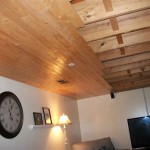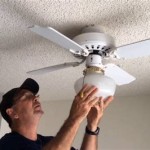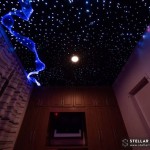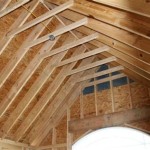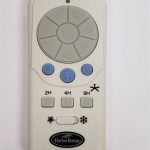Hugger vs. Low Profile Ceiling Fan: A Comprehensive Guide
Ceiling fans offer a versatile solution for improving air circulation and reducing energy costs in both residential and commercial spaces. They come in a variety of styles and sizes, but one key distinction lies in their mounting type: hugger (also known as flush mount) and low profile. Understanding the differences between these two types is crucial for selecting the most appropriate fan for a given room, particularly in situations where ceiling height is a limiting factor. This article provides a detailed comparison of hugger and low profile ceiling fans, exploring their design, installation considerations, performance characteristics, and suitable applications.
Choosing the right ceiling fan can significantly impact the comfort and aesthetics of a room. Factors such as blade span, motor efficiency, and light fixture integration all play a role in the overall performance and suitability of the fan. However, the mounting style often dictates whether a particular fan can even be installed in a specific location. Neglecting to consider ceiling height during the selection process can lead to inadequate airflow, potential safety hazards, and an unsatisfying aesthetic outcome.
Understanding Hugger Ceiling Fans
Hugger ceiling fans are specifically designed for rooms with low ceilings. Their defining characteristic is their minimal distance from the ceiling, achieved by mounting the fan directly against the ceiling junction box. This flush mount design eliminates the need for a downrod, which is a standard component in traditional ceiling fans. By minimizing the vertical space occupied by the fan, hugger models provide maximum headroom in rooms where ceiling height is at a premium.
The design of hugger ceiling fans typically incorporates a low-profile motor housing and a streamlined blade design. This further reduces the overall height of the fan while maintaining adequate airflow. The absence of a downrod also contributes to a cleaner and more modern aesthetic, making hugger fans a popular choice for contemporary interior design styles.
While hugger fans are ideal for low ceilings, they may not be the best option for rooms with standard or high ceilings. In such situations, the reduced distance between the fan blades and the ceiling can hinder airflow and reduce the fan's overall effectiveness. The limited space between the motor and the ceiling can also potentially lead to overheating issues, particularly in models with less efficient motors.
Exploring Low Profile Ceiling Fans
Low profile ceiling fans represent a middle ground between traditional downrod-mounted fans and hugger fans. They are designed to be installed with a very short downrod, typically only a few inches in length. This allows for a slightly greater distance between the fan blades and the ceiling compared to hugger fans, while still maintaining a relatively low profile that is suitable for rooms with moderately low ceilings.
The inclusion of a short downrod in low profile ceiling fans offers several advantages. It allows for improved airflow compared to hugger fans, as the blades have more room to circulate air. The downrod also provides better motor cooling, as it allows for greater ventilation around the motor housing. Furthermore, the slight separation from the ceiling can reduce noise transmission, making low profile fans a quieter option in some cases.
Low profile ceiling fans are often a good compromise for rooms where a hugger fan might not provide sufficient airflow but a traditional downrod-mounted fan would hang too low. They offer a balance between space-saving design and efficient air circulation, making them a versatile choice for a variety of applications. However, it is important to carefully consider the dimensions of the fan and the height of the ceiling to ensure that the fan is installed safely and effectively.
The term "low profile" can sometimes be used interchangeably with "hugger" in marketing materials. It is important to carefully examine the specifications and installation instructions of a particular fan before making a purchase to ensure that it meets the specific requirements of the intended application.
Key Differences: Installation, Performance, and Suitability
The primary difference between hugger and low profile ceiling fans lies in their installation method. Hugger fans are mounted directly to the ceiling junction box, while low profile fans utilize a short downrod. This seemingly small difference has significant implications for airflow, motor cooling, and overall performance. The different installation requirements also affect the ease and complexity of the installation process.
Installation Considerations: Hugger fans are generally easier to install than low profile fans, as they require no downrod assembly. However, the tight space between the fan motor and the ceiling can make wiring and electrical connections more challenging. Low profile fans, on the other hand, require the attachment of a short downrod, which adds a step to the installation process. The small downrod makes maintenance a little easier than with a hugger fan, because there is a little more room to work.
Performance Characteristics: Low profile fans generally offer better airflow than hugger fans due to the greater distance between the blades and the ceiling. The short downrod allows the blades to move air more effectively, resulting in improved circulation and cooling. Hugger fans, while suitable for low ceilings, may not provide adequate airflow in larger rooms or areas with poor ventilation. They might work well in a small bathroom, but less well in a small living room.
Suitability and Applications: Hugger ceiling fans are best suited for rooms with ceilings below 8 feet. They are an essential choice for situations where maximizing headroom is a priority. Low profile ceiling fans are a versatile option for rooms with ceilings between 8 and 9 feet. They offer a good balance of space-saving design and efficient airflow, making them suitable for bedrooms, living rooms, and other living spaces. It is important to measure the ceiling height accurately and consider the dimensions of the fan before making a purchase to ensure optimal performance and safety.
The choice between a hugger and low profile ceiling fan ultimately depends on the specific characteristics of the room in which it will be installed. Ceiling height is the most critical factor to consider, but other variables such as room size, ventilation, and desired aesthetic should also be taken into account. By carefully evaluating these factors, it is possible to select the ceiling fan that will best meet the needs of the space and provide optimal comfort and energy efficiency.
Beyond the mounting style, it is crucial to consider the motor type and blade design of the ceiling fan. Energy-efficient DC motors offer significant savings compared to traditional AC motors, while aerodynamic blade designs can improve airflow and reduce noise. The integration of a light fixture can also be a valuable feature, particularly in rooms where overhead lighting is limited. These additional considerations can further enhance the performance and functionality of the ceiling fan.
When selecting a ceiling fan, it is also important to prioritize safety. Ensure that the fan is properly grounded and installed according to the manufacturer's instructions. Regularly inspect the fan for any signs of wear or damage, and address any issues promptly to prevent potential hazards. A properly installed and maintained ceiling fan can provide years of reliable service and contribute to a more comfortable and energy-efficient living environment.

Hugger Ceiling Fans Sleek Solutions For Low Spaces Delmarfans Com

Hugger Ceiling Fans Sleek Solutions For Low Spaces Delmarfans Com

Private Brand Unbranded Littleton 42 In Led Indoor White Ceiling Fan With Light Kit Ub42s Wh Sh The Home Depot
Best Ceiling Fans For Small Bedrooms Quiet Performance Spaces Advanced Systems

What Size Ceiling Fan Do I Need 1000bulbs Blog

Let S Talk About Picking Out A Ceiling Fan

Hugger Ceiling Fans Sleek Solutions For Low Spaces Delmarfans Com

Best Ceiling Fans For Kitchens Ultimate Guide Advanced Systems
Best Ceiling Fans For Small Bedrooms Quiet Performance Spaces Advanced Systems
Related Posts

